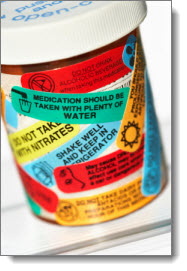 “Psychiatric patients are over-medicated.” I hear that a lot, particularly from people who learn that I write a Psychopharmacology blog. Part of me agrees, yet another part of me realizes that this is not a simple black-or-white issue; instead, it is nuanced and complex.
“Psychiatric patients are over-medicated.” I hear that a lot, particularly from people who learn that I write a Psychopharmacology blog. Part of me agrees, yet another part of me realizes that this is not a simple black-or-white issue; instead, it is nuanced and complex.
There is no consistent definition of polypharmacy in the literature. So what is it, really? How many medications are too many? The most accurate definition of polypharmacy I’ve come across is, “the administration of many drugs together.” As to how many medications are too many, there is no single number that represents the tipping point between an acceptable number of drug therapies and a “poly” issue. What’s more, no medical condition presents the same way in every patient. Complications and co-morbidities are the rule, not the exception.
The core issue here is not how polypharmacy is defined or the number of medications employed. What’s most important is whether the use of multiple drug treatments carries an accompanying therapeutic benefit that manifests discernable symptom improvement in the affected patient. Sometimes, it doesn’t because at the first sign of treatment resistance, some prescribers find it necessary to design highly complex drug regimens without a clear rationale or good data, thereby adopting a “make it up as you go” approach. Fueled by a “more is more” belief system, these prescribers tinker with a patient’s drug regimen to excess.
But polypharmacy can be beneficial by providing more therapeutic options to help patients achieve better outcomes. Too many descriptions carry negative connotations, such as increased costs, poorer compliance and greater risks of side effects and drug interactions. While these negatives are indeed real, they are not the case for the majority of medicated patients. That is, most patients are medication compliant, only a relatively small number of drug-drug interactions are important, and generic alternatives for the most commonly prescribed medications are ever increasing. For example, while lithium is often eschewed by prescribers due to its side effects, two-thirds of patients taking lithium describe hardly any adverse effects at all.
Multiple medications may be necessary to effectively manage mental health disorders accompanied by physical health problems and other co-morbidities. For example, a patient with bipolar disorder, diabetes and hypertension may require as many as nine drugs to successfully manage these three disease states concurrently. Some would argue that the goal should be to decrease the number of medications in this patient, but it could be that the person truly needs nine medications.
The most important consideration in medication management is to conceptualize a reason for each drug choice. If, after thorough analysis of a patient’s drug regimen, reasons for the use of certain medications are not apparent, then the patient (or the patient’s advocate) should be encouraged to ask the prescriber for a re-examination of the medication profile. Seeking a second opinion may also be warranted.
With continued advances in pharmacological therapies and an ever-increasing pool of medications from which prescribers can choose, polypharmacy will become an even more significant issue in the future. The line between just enough and too much will no doubt be further blurred.
————————————————————
Joe Wegmann is a licensed clinical social worker and a clinical pharmacist with over 30 years of experience in counseling and medication treatment of depression and anxiety. Joe’s new book, www.pesi.com. To learn more about Joe’s programs or to contribute a question for Joe to answer in a future article, visit his website at www.thepharmatherapist.com, or e-mail him at joe@thepharmatherapist.com.